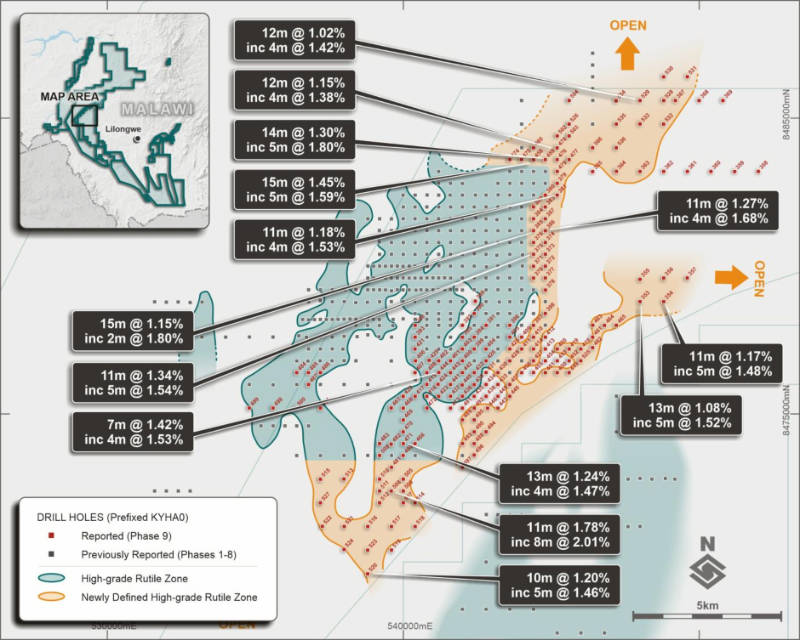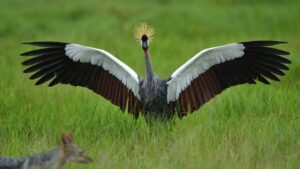Sovereign drilling expands the size of its rutile kingdom

Pic: John W Banagan / Stone via Getty Images
Sovereign’s Kasiya rutile deposit is looking a great deal larger after drilling increased the size of the high-grade mineralised envelope by about 35 per cent.
Phase 9 drilling has increased the area of high-grade rutile mineralisation to 89sqkm from the previous 66sqkm, taking its total drilled area of mineralisation in Malawi up to 114sqkm.
Notable results include 8m at 2.01 per cent rutile, 5m at 1.8 per cent rutile and 5m at 1.59 per cent rutile, which is consistent with previous drilling results.
The receipt of the Phase 9 results also means that Sovereign Metals (ASX:SVM) now has all the drill results required to undertake a maiden resource estimate for the Kasiya deposit.
“This drilling has served to significantly further increase the high-grade, near surface rutile mineralisation at Kasiya,” managing director Dr Julian Stephens said.
“We now have a grand total of well over a hundred square kilometres of mineralisation defined across Kasiya and Nsaru.
“These very large, high-grade areas of mineralisation may well become one of the largest primary rutile deposits in the world.
“Unlocking a new, globally significant source of direct feed natural rutile could help meet the growing demand for low carbon feedstock across the titanium industry supply-chain.”
Further step-out drilling is continuing at both Kasiya and Nsaru with multiple field drilling teams deployed targeting additional rutile mineralisation that will potentially add to future resources.

Ksaiya rutile drilling
The Phase 9 drilling takes the number of holes reported from Kasiya up to 507 holes totalling 4,802m and has confirmed that significant rutile enrichment occurs in the top 8m from surface with very high-grades, often more than 1.5 per cent rutile in the top 3m to 5m.
Sovereign noted that in most cases, drill depth was limited by the hand-auger drilling equipment capacity and it is assumed that free-dig rutile mineralisation should continue vertically to the base of saprolite, which is estimated at about 25m depth from surface.
It added that peripheral zones at Kasiya with nominal 800m by 800m spacing may need further infill drilling before they can be included in a future resource estimate.
Nsaru also requires further infill and extensional drilling before it will be brought into the resource estimate.
Other work to be carried out includes extensional and infill hand auger and core drilling to increase the resource confidence and grow tonnages as well as starting long-lead elements of the scoping study such as mining method and pit optimisation studies, tailings design and continued metallurgical test work
This article was developed in collaboration with Sovereign Metals, a Stockhead advertiser at the time of publishing.
This article does not constitute financial product advice. You should consider obtaining independent advice before making any financial decisions.
Related Topics

UNLOCK INSIGHTS
Discover the untold stories of emerging ASX stocks.
Daily news and expert analysis, it's free to subscribe.
By proceeding, you confirm you understand that we handle personal information in accordance with our Privacy Policy.








